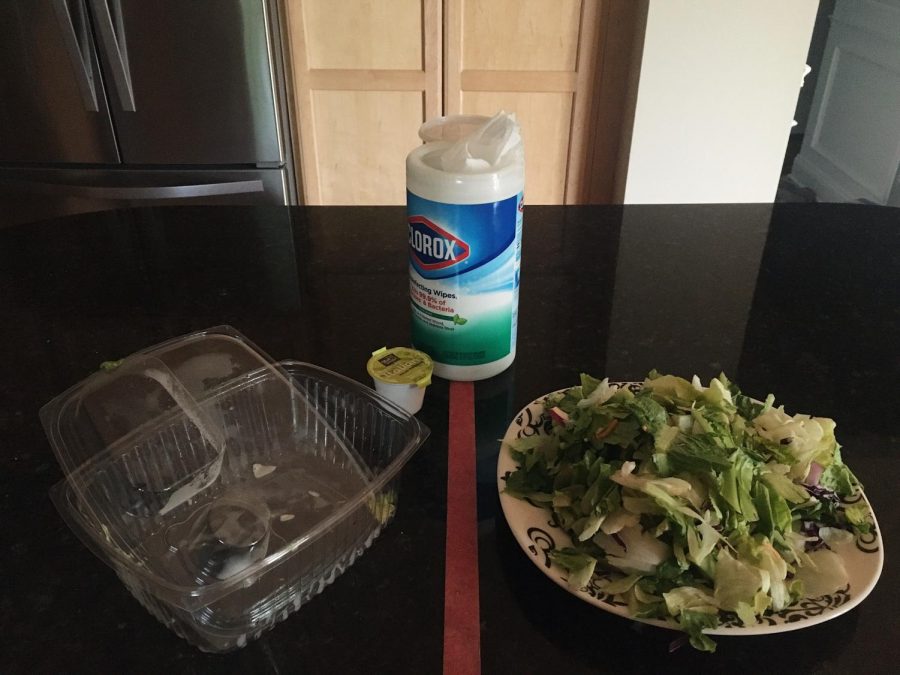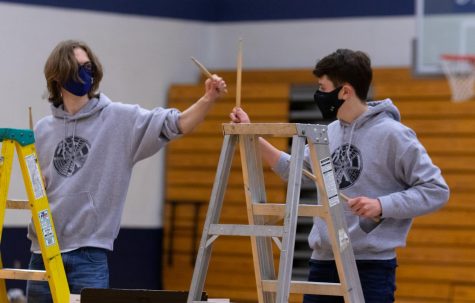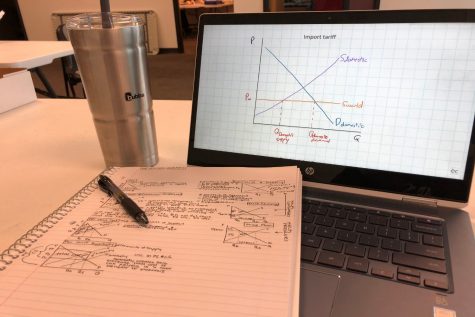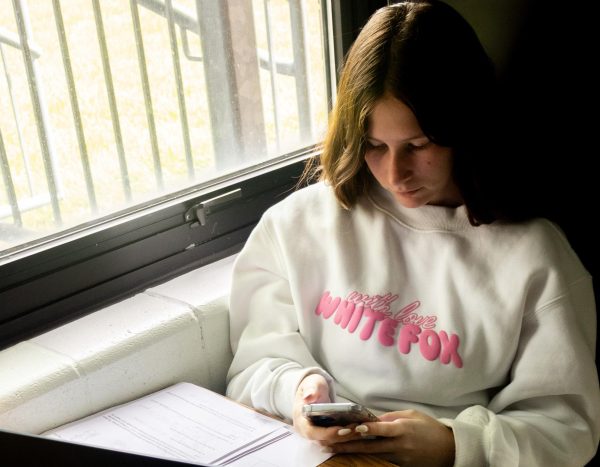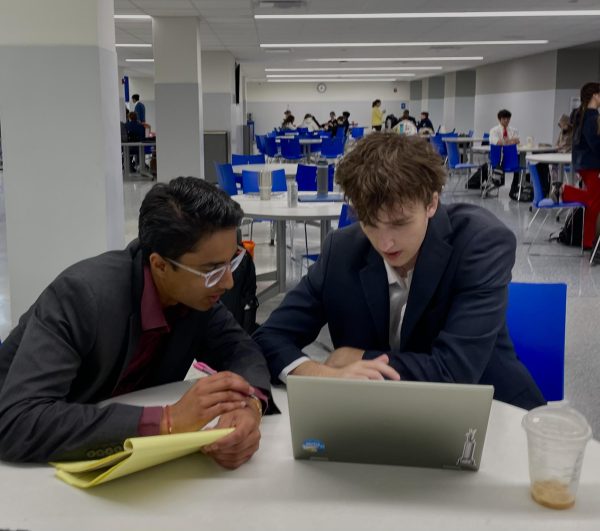Navigating Quarantine
The dos and don’ts of staying germ-free
Separate a space into a clean and dirty side. Use disinfecting wipes to clean containers and avoid contamination.
The conditions people are facing under COVID-19 are wildly unprecedented and scary, and none of us are completely confident on how to deal with it. Everyone is under a stay-at-home order, which means to stay at unless they must leave for reasons deemed essential. It is not safe for ourselves or others to leave the house during these times, therefore we must adapt to a new, temporary lifestyle.
Within this new lifestyle however, lines can be blurry and risks can be confusing. Here’s some basic guidelines of how to handle activities that have become much more common in our lives safely:
Food Delivery and Carry Out
Adjusting to at-home life has represented a huge shift for many people in terms of diet. Going out to eat is a very common trait of American households and, especially, busy teenagers who don’t have time to go home between school and activities. In short, many are not used to purely home cooked meals. In addition, cooking dinner every night can become stressful and tiring for the cook at times. A still allowable luxury is delivery or take out dinner options.
To aid in this shift, many food-service establishments have made new takeout menus and delivery options. Junior Krystal Arias works at Racanelli’s Pizza off Mid Rivers, where they have changed procedures to protect customers and employees.
“[Customers] now have to pay over the phone, and we are no longer taking cash tips,” said Arias.
Delivery is a great, safe option for those who don’t want to cook as long as it is approached properly. The first step is to order the food, ideally through delivery services with pre-pay options where no human contact is necessary- many food delivery services, such as DoorDash, have waived their delivery fee. Other establishments are changing procedures to accommodate safer carryout options. Junior Rebecca Harrison works at Chick-fil-a where business lately has not slowed despite these changes.
“Instead of having people come inside to pick up food we now bring it out to their cars on trays wearing gloves and masks, and we basically wash our hands after taking each one out… we have done better with our drive thru sales last week even beating our all time record,” described Harrison.
Once the food has been picked up or delivered, it is best if only one person of the household comes in contact with the food packaging. They should remove the food from containers onto clean plates without touching the food with their hands that have come in contact with the possibly contaminated packaging. When the food is onto a clean surface, dispose of all containers, preferably into an exterior garbage can, and they should thoroughly wash their hands. Finally, sanitize the area where the packaging was and then enjoy the food.
The risk of contracting COVID-19 via food packaging is low, but not impossible, so it is wise to eliminate any possible risk.
Take a Hike
Going for walks and hikes is a great way to stay active and not fall into a sedentary, structureless daily life. However, there is an area for concern with leaving the house at all during this pandemic. Hiking, biking and walking are all safe to do as long as it’s not with a group of people other than those you live with. Additionally, a six-foot distance should be maintained between your party and others to avoid the spread of airborne germs. If another person is coming, move to the very edge of the path and they will likely do the same. If they show no sign of awareness, it’s okay to stop and step off the trail to protect yourself. And, as always, if you feel sick in any way and have any symptoms, skip the walk for that day. Just stay home until a recovery is made to protect others and yourself.
Grocery Shopping
Food is essential, therefore it is acceptable to go out for groceries. However, it is not to be treated as a fun trip out of the house or a family outing. Make a list and go out and buy the basics that you need. Emphasis on the word need, there needs to be enough food for everyone so just put what is necessary in the cart. In addition, one should wear a mask and possibly gloves to go into these public places. It is essential to remember that the most important part in stopping the spread of this virus is individuals actions and precautions. Gloves and masks don’t stop everything. For example, if someone touches a grocery item and then their phone without washing their hands, the phone has been contaminated. Then, if they later touch their phone and then their face, they could contract the virus. Therefore, it cannot be stressed enough, that washing hands and disposing of gloves is extremely important.
Similar to most establishments, grocery stores are working to make interactions between customer and employee safer. For senior Aspen Inserra, an employee at Dierbergs, she feels safe at her job because of the ways they’ve adapted.
“Procedures have changed, they have put up plexiglass to protect the cashiers and baggers and they also have given us bandannas/masks and safety glasses,” explained Inserra.
After the first step of purchasing groceries with as minimal contact as possible and while practicing social distancing, to safely bring the purchased items into the household, it is smart to section the countertop, table or central place into two halves: contaminated and sanitized. Place the grocery bags on the contaminated side, grab disinfectant wipes, and start sanitizing. As each individual item is wiped down, move it to the sanitized side and allow it to dry. Then it is free to be put away by anyone in the household. Afterwards, dispose of the grocery bags and the handler should wash their hands.
All of these processes may seem a bit tedious and inconvenient, but what would be much more inconvenient is contracting the coronavirus or giving it to a loved one. These measures are put into place to protect everyone so that, hopefully, life can return to normal again as soon as possible.
Your donation will support the student journalists of Francis Howell Central High School. Your contribution will allow us to purchase equipment and cover our annual website hosting costs. FHCToday.com and our subsequent publications are dedicated to the students by the students. We hope you consider donating to allow us to continue our mission of a connected and well-informed student body.



